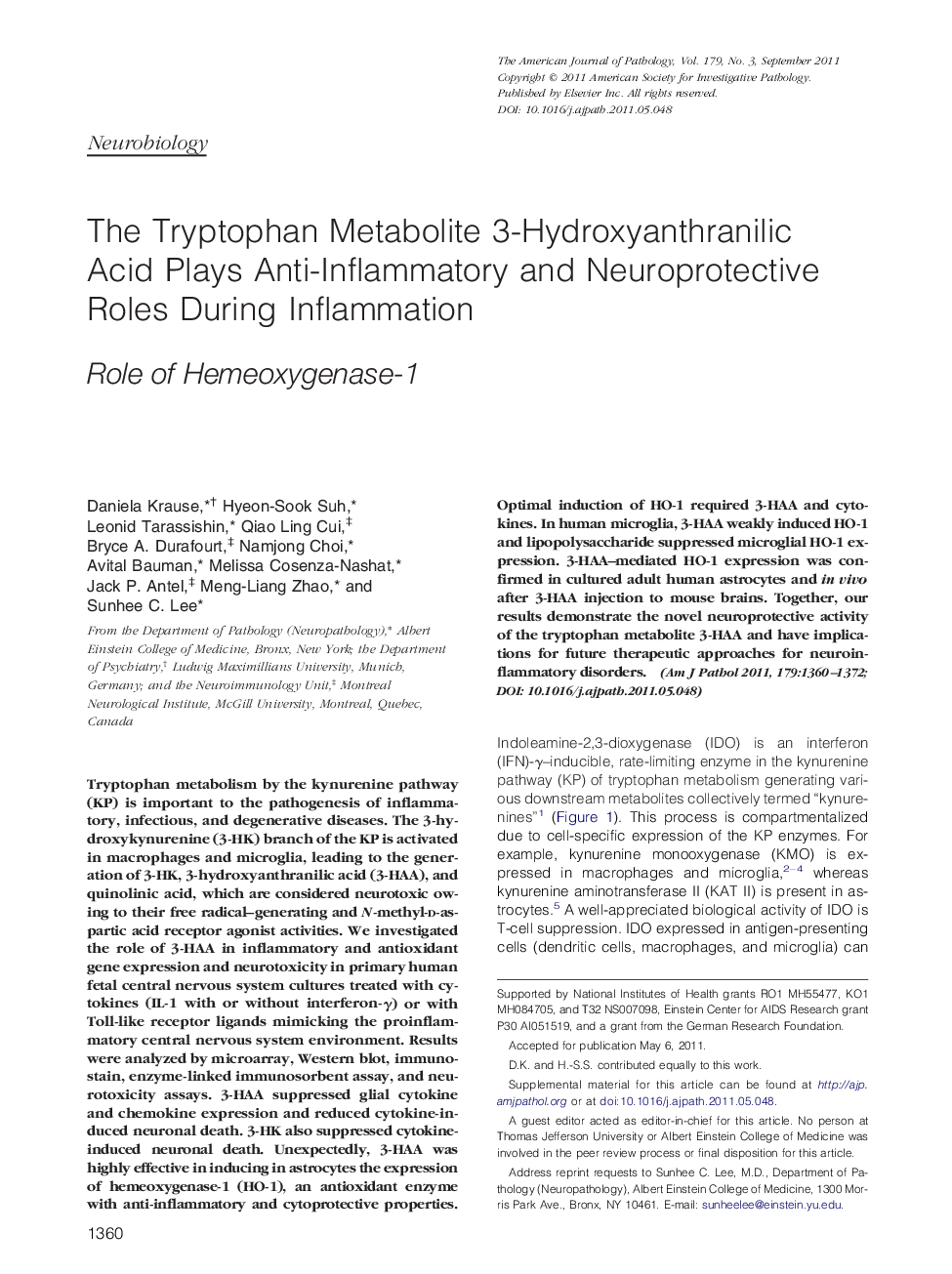| Article ID | Journal | Published Year | Pages | File Type |
|---|---|---|---|---|
| 5935949 | The American Journal of Pathology | 2011 | 13 Pages |
Tryptophan metabolism by the kynurenine pathway (KP) is important to the pathogenesis of inflammatory, infectious, and degenerative diseases. The 3-hydroxykynurenine (3-HK) branch of the KP is activated in macrophages and microglia, leading to the generation of 3-HK, 3-hydroxyanthranilic acid (3-HAA), and quinolinic acid, which are considered neurotoxic owing to their free radical-generating and N-methyl-d-aspartic acid receptor agonist activities. We investigated the role of 3-HAA in inflammatory and antioxidant gene expression and neurotoxicity in primary human fetal central nervous system cultures treated with cytokines (IL-1 with or without interferon-γ) or with Toll-like receptor ligands mimicking the proinflammatory central nervous system environment. Results were analyzed by microarray, Western blot, immunostain, enzyme-linked immunosorbent assay, and neurotoxicity assays. 3-HAA suppressed glial cytokine and chemokine expression and reduced cytokine-induced neuronal death. 3-HK also suppressed cytokine-induced neuronal death. Unexpectedly, 3-HAA was highly effective in inducing in astrocytes the expression of hemeoxygenase-1 (HO-1), an antioxidant enzyme with anti-inflammatory and cytoprotective properties. Optimal induction of HO-1 required 3-HAA and cytokines. In human microglia, 3-HAA weakly induced HO-1 and lipopolysaccharide suppressed microglial HO-1 expression. 3-HAA-mediated HO-1 expression was confirmed in cultured adult human astrocytes and in vivo after 3-HAA injection to mouse brains. Together, our results demonstrate the novel neuroprotective activity of the tryptophan metabolite 3-HAA and have implications for future therapeutic approaches for neuroinflammatory disorders.
